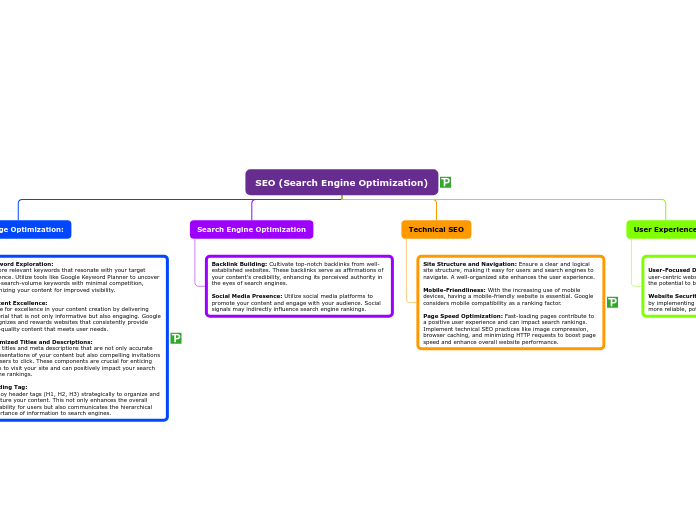SEO (Search Engine Optimization)
On- Page Optimization:
Keyword Exploration:
Explore relevant keywords that resonate with your target audience. Utilize tools like Google Keyword Planner to uncover high-search-volume keywords with minimal competition, optimizing your content for improved visibility.
Content Excellence:
Strive for excellence in your content creation by delivering material that is not only informative but also engaging. Google recognizes and rewards websites that consistently provide high-quality content that meets user needs.
Optimized Titles and Descriptions:
Craft titles and meta descriptions that are not only accurate representations of your content but also compelling invitations for users to click. These components are crucial for enticing users to visit your site and can positively impact your search engine rankings.
Heading Tag:
Employ header tags (H1, H2, H3) strategically to organize and structure your content. This not only enhances the overall readability for users but also communicates the hierarchical importance of information to search engines.
Search Engine Optimization
Backlink Building: Cultivate top-notch backlinks from well-established websites. These backlinks serve as affirmations of your content's credibility, enhancing its perceived authority in the eyes of search engines.
Social Media Presence: Utilize social media platforms to promote your content and engage with your audience. Social signals may indirectly influence search engine rankings.
Technical SEO
Site Structure and Navigation: Ensure a clear and logical site structure, making it easy for users and search engines to navigate. A well-organized site enhances the user experience.
Mobile-Friendliness: With the increasing use of mobile devices, having a mobile-friendly website is essential. Google considers mobile compatibility as a ranking factor.
Page Speed Optimization: Fast-loading pages contribute to a positive user experience and can impact search rankings. Implement technical SEO practices like image compression, browser caching, and minimizing HTTP requests to boost page speed and enhance overall website performance.
User Experience
User-Focused Design: Develop a visually attractive and user-centric website layout. A favorable user experience has the potential to boost engagement and decrease bounce rates.
Website Security (HTTPS): Enhance your website's security by implementing HTTPS. Google views secure websites as more reliable, potentially resulting in an improved ranking.
